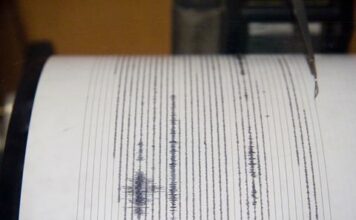Gilroy
– A majority of teachers feel they had little input in the
formation of data indicators used in Gilroy Unified School
District’s Accountability Plan, according to a study conducted this
spring by the Gilroy Teachers Association. But district officials
are skeptical of the surveys findings.
Gilroy – A majority of teachers feel they had little input in the formation of data indicators used in Gilroy Unified School District’s Accountability Plan, according to a study conducted this spring by the Gilroy Teachers Association. But district officials are skeptical of the surveys findings.
Almost 60 percent of teachers returned the surveys to GTA President Michelle Nelson before the cutoff date in February.
“It’s hard to get everybody to do it,” Nelson said. “It takes a long time to get 100 percent participation.”
A preliminary interpretation of the results found that 63 percent of teachers reported that they did not have significant input in deciding what the final tier two indicators would be. But with additional surveys in, the figure was bumped to 72 percent.
Tier two indicators are a part of the district’s Accountability Plan and include six of eight possible variables each school chooses to focus on and develop strategies for improvement. Tier one indicators are hard data consisting of 39 different data points like attendance rates, graduation rates and standardized test scores. Tier two indicators rely on this hard data to develop strategic plans for improving math, science, writing and reading programs.
Each school is required to have plans in place. Two additional components listed in the district’s strategic plan are selected by the school administration and staff to individualize their improvement plan.
According to the final teacher survey, 11 percent said the tier two indicators were decided mostly by teachers and 17 percent said decisions were evenly split between administrators and staff.
But lack of input is not what has upset teachers most.
“They recognize the need for increasing test scores (through tier two indicators),” Nelson said. “What the frustration has been is the time. When are they supposed to find to find the time?”
According to 2001 data, the average workday for GUSD teachers is 10 and 1/2 hours and with additional data to decipher – teachers put in even more time, Nelson said.
Four of the seven questions on the survey pertained to time and 59 percent reported that they spend more time working strictly due to tier two indicators.
A sample of written comments teachers included on surveys include: “I think (tier two) has benefits, but give me the time to do it,” and “It is adding to the teaching day. I find out about required tests for tier two goals the week I have to give a test . . . this throws off my lesson plans” and “I feel my time is being usurped.”
A combination of administrators and staff at Ascension Solorsano Middle School chose data indicators after examining standardized test scores and finding the school was not where they wanted it to be in the areas of reading, writing and math. The group set target goals and decided to include technology and parent involvement as the final tier two indicators.
Principal Sal Tomasello and his staff came to a consensus as to which tier two indicators would be selected.
“We tried to tie all six goals together,” he said. “Through a collaboration, in a series of a meetings with all staff members, we decided.”
Not all schools developed plans following Solorsano’s method.
Some were a combination of staff and administration, others were mostly staff or mostly administration, according to GUSD Superintendent Edwin Diaz.
While Diaz was aware of the GTA’s survey, he had not seen a copy of the results and was wary of the findings.
“It wasn’t a complete survey,” he said.
The survey was distributed a variety of ways, including during staff meetings at Brownell Academy and during brunch sessions at Gilroy High School. However, Diaz did not believe all campuses were included and did not know how many surveys were finally submitted.
“I still have not been provided a copy of the results,” he said. “It would be helpful.”
Diaz also questioned the wording on the survey. One question, he argued, asked if tier two indicators were teacher-driven or district-driven – the accountability reports are district initiatives, he explained.
Nelson did acknowledge that the results are disproportionate from each school because of the difficult time disseminating and collecting the surveys, but believed 60 percent was sufficient to draw some conclusions – especially in the area of time concerns.
“It’s certainly not news (to the district),” she said.
Teacher survey comments
• I feel that we don’t really have the time to see if the strategies we choose to implement work or not before we move on to the next area.
• Putting together data and graphs takes up time. Teaching time is taken up with more tests. Then of course, the tests have to be graded and more time is added.
• I now volunteer for nothing (a big change) and drag my feet on “training.”
• This is a better approach to making a difference in the academic teachings of a classroom. It has more of a chance of impacting what the teacher does academically with students.
• The problem is the schedule is too fast. There was no input from teachers as to how to schedule the day.
• We are not really heard. Teacher input is so vital. We give input and it goes nowhere. We know the kids and their needs and what we need to serve them.
• We had fake input.












